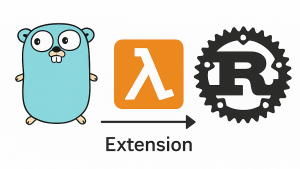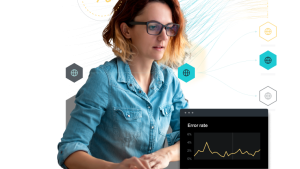Observability and monitoring are closely related to each other.
- Monitoring primarily focuses on predefined metrics and thresholds to track the health and performance of a system. It's reactive, meaning it identifies issues after they occur.
- Observability goes beyond monitoring by allowing you to infer the internal state of a system based on its outputs, like logs, metrics, and traces. It's proactive, allowing you to identify and address issues before they impact users.
From a DevOps and SRE perspective, monitoring is reactive, while observability is proactive.
Why is it important to know the difference? Simple, stand-alone systems may be more easily maintained through monitoring alone with automated alerting and experienced IT engineers. However, monitoring alone might not be enough in today’s modern space of complex infrastructures, use of microservices, and rapid development and release of new software.
Observability tools can quickly analyze data gathered across an organization’s hardware and software systems located in various parts of the world. Observability tools help teams to identify causes and automate responses to issues. As an added benefit, observability platforms can identify what you don’t know—the unknown unknowns—using machine learning and AIOps algorithms.
In this article, we’ll look deeper into the differences and similarities of observability versus monitoring.
What is monitoring?
Monitoring informs you when something is wrong. Monitoring involves watching and reacting to system data that indicates problems. Monitoring tools watch the telemetry from your systems and can be used to visualize information and set alerts on metrics, such as network throughput, resource utilization, available storage, and error rates. Logs can further inform IT personnel about the context of issues flagged by monitoring tools. However, without additional analytics, it can be difficult to predict future occurrences based solely on monitored data.
Digital experience monitoring (DEM) and real user monitoring (RUM) gather data from the user’s perspective to understand your customers’ engagements and interactions with your digital services.
Data from these monitoring techniques give DevOps, IT, and customer service personnel insights into system performance and issues in real-time. However, they do not necessarily inform your team about why and how issues occur – or predict the impact they might have. In order to have that deep level of understanding, you need observability.
What is observability?
Observability takes monitoring practices to the next level by revealing the what, why and how issues occur across an entire technology stack. Observability digests and analyzes monitored metrics and events along with logs, traces and other inputs using artificial intelligence (AI) methods, such as machine learning. Together, these observability processes produce actionable insights into system problems. Some observability services predict issues and recommend or create automation tools to solve challenges before they reach customers.
Observability vs. monitoring: key differences
Think of observability as an extension of monitoring. Monitoring data is a subset of observability data. When comparing these two areas, observability tools utilize a greater number of and vastly more sophisticated methods compared to monitoring. These key aspects drive the major differences in usage, scope, and capabilities.
| Monitoring | Observability | |
| Focus | Past: What happened. Reactive. | Predictive: why and how it happened and insight into potential future problems. Proactive. |
Problem solving | Limited. Requires data correlation and analysis by personnel. | Extensive. Uses AIOps to correlate and analyze massive data sets to provide actionable insight. |
Data sources | Metrics and logs | Metrics, events, logs, and traces (MELT), plus information from application performance monitoring (APM), security and event information management (SEIM), DEM, and RUM. |
Effectiveness | Limited by complexity of systems. Large data sets across distributed infrastructures limit speedy human analysis. | Unlimited with AIOps and machine learning to process large data streams across infrastructure in real time while continuing to learn from that data. |
When to use monitoring vs. observability
Monitoring provides real-time alerts, logs, and visualizations to help teams quickly respond to issues immediately after they happen. Dashboards give clear, visual insights that help teams quickly pinpoint issues. With the simplest IT operations and services, a monitoring service alone with configurable dashboards can be an effective solution for an organization.
As enterprises have adopted multi-cloud, hybrid or cloud-native approaches, plus implemented distributed systems and complex technology stacks, observability has become paramount to ensure that things are up and running smoothly without interruptions. The risk of dissatisfied users, poor application performance, longer downtimes, and higher costs increases. Observability tools, driven by AIOps, analyze metrics, events, logs, and trace data from across an organization’s infrastructure to identify the root cause of an issue in near real-time. With a detailed view into the entire infrastructure and software path, DevOps, SRE, and SEIM personnel can quickly solve problems.
How observability and monitoring work together
From small businesses to large enterprises, all organizations can benefit from both monitoring and observability to make operations more effective.
Monitoring allows teams to quickly respond to smaller, less complex problems. If server utilization peaks and threatens customer serviceability, alerts can trigger a quick response from SRE teams or launch automation tools that deploy needed resources before customers notice an issue.
Conversely, distributed infrastructures and demands for quick, reliable software releases, require deep insight into your infrastructure and services and their various touchpoints. If an issue occurs repeatedly over time, observability can give you the insights needed to find the root cause and prevent it from recurring.
For example, ANZ Bank uses observability for the entire lifecycle of its ANZ mobile app to ensure their technology is highly performant. William Hill began using observability tools to track their systems performance, which serves 5.2 million transactions daily. Using observability, William Hill engineers were able to improve MTTR by 80 percent and resolve their most critical P1 incidents in less than 60 minutes.
See more examples of how New Relic customers benefit from observability.
Observability and monitoring in DevOps and SRE
DevOps and SRE teams need actionable insights to work effectively and efficiently. Monitoring and observability work together to give them that insight and enable them to get ahead of issues and prevent them from impacting customers.
DevOps can use observability tools to understand how their code impacts all touchpoints across the full software lifecycle. AIOps analyzes massive sets of data in real-time across the entire infrastructure to pinpoint where software bottlenecks occur, giving developers the insight needed to optimize their programs. As new code releases begin generating signals, observability can begin its analysis, returning critical metrics on systems and software behavior.
Reliability engineers receive immediate feedback from real-time monitoring and can watch system behavior in various dashboards. Alerts allow them to respond quickly, while observability analytics interpret data across the infrastructure to reveal root causes of issues. From the insight learned, SRE can drive down mean-time-to-investigate (MTTI) and MTTR, while automation tools can be built to address such issues in the future.
Beyond DevOps and SRE, observability can deliver new insights to SEIM teams to better protect a company’s digital assets. DEM and RUM can provide information to digital marketing and sales departments to understand how their activities are reaching customers and driving sales. Using monitoring and observability can benefit business operations end-to-end.
Next steps
Modern monitoring and observability enable resilient systems and services. They empower DevOps, SRE, SEIM, and other departments with a data-driven approach across the entire software lifecycle.
When used together, observability and monitoring bring all telemetry—metrics, events, logs, traces and additional signals— into a unified data platform with powerful full-stack analysis tools. They enable teams to plan, build, deploy, and run software and services to deliver the best digital experiences that fuel innovation and growth.
Get started today with powerful observability and monitoring from New Relic.
The views expressed on this blog are those of the author and do not necessarily reflect the views of New Relic. Any solutions offered by the author are environment-specific and not part of the commercial solutions or support offered by New Relic. Please join us exclusively at the Explorers Hub (discuss.newrelic.com) for questions and support related to this blog post. This blog may contain links to content on third-party sites. By providing such links, New Relic does not adopt, guarantee, approve or endorse the information, views or products available on such sites.



